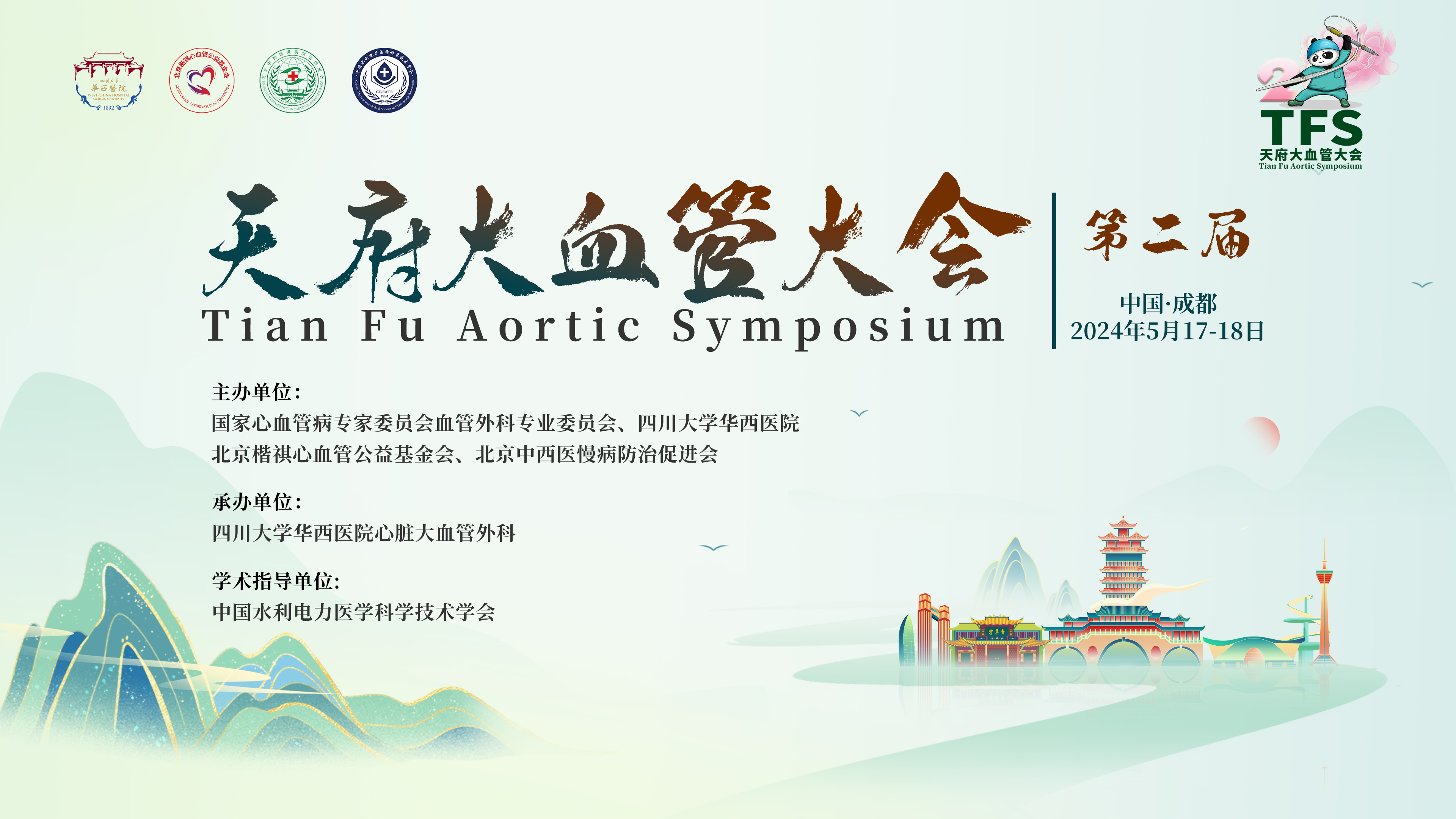
The aortic arch suffers from a high number of anatomical variants and a complex hemodynamic environment. Therefore, surgical treatment of arch disease requires individualized options. For the treatment of aortic arch disease, more and more innovative stents are emerging for different therapeutic procedures.On May 18, 2024, Professor Hu Jia of the Department of Cardiac Macrovascular Surgery, West China Hospital, Sichuan University, shared his initial experience in the application of innovative aortic arch partial-branching stents at the 2nd Tianfu Large Vessel Society Conference (TFS 2024).The first experience of the innovative stenting of the aortic arch was presented by Professor Hu Jia of the Department of Cardiac Macrovascular Surgery, West China Hospital, Sichuan University.
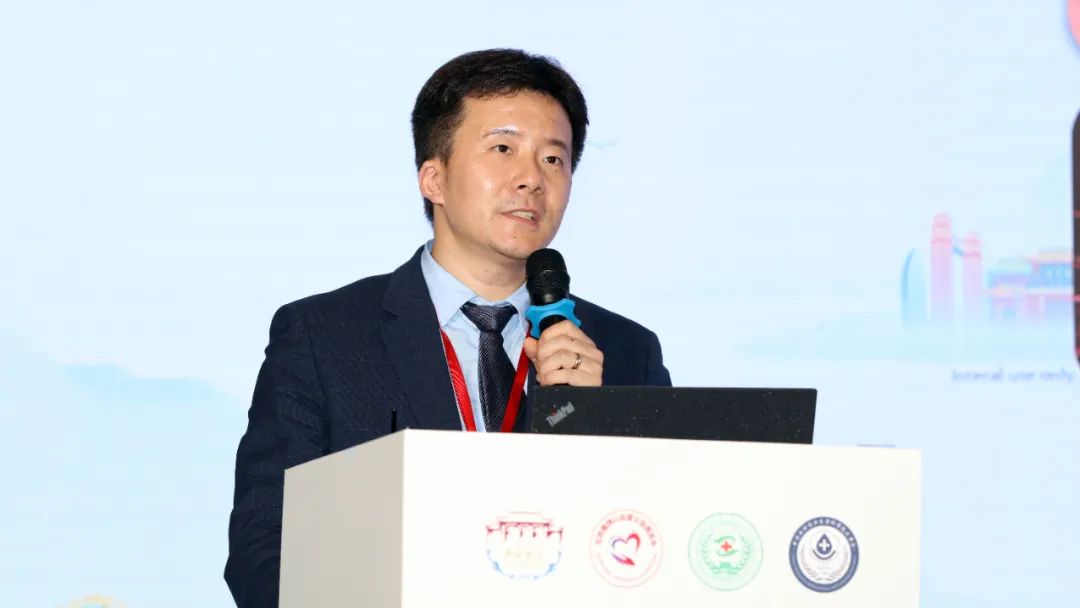
The treatment of aortic arch disease needs to focus on the etiology, pathology and anatomical structure of the aorta in order to develop individualized treatment strategies. The “HENDO” treatment system proposed by Prof. Shu Chang covers Hybrid Arch Repair, Endovascular Repair, and Open Arch Repair, aiming to help clinicians to individualize the choice of procedures to bring better treatment results to patients. The aim of the system is to help clinicians to individualize the choice of procedures and bring better treatment results to patients.
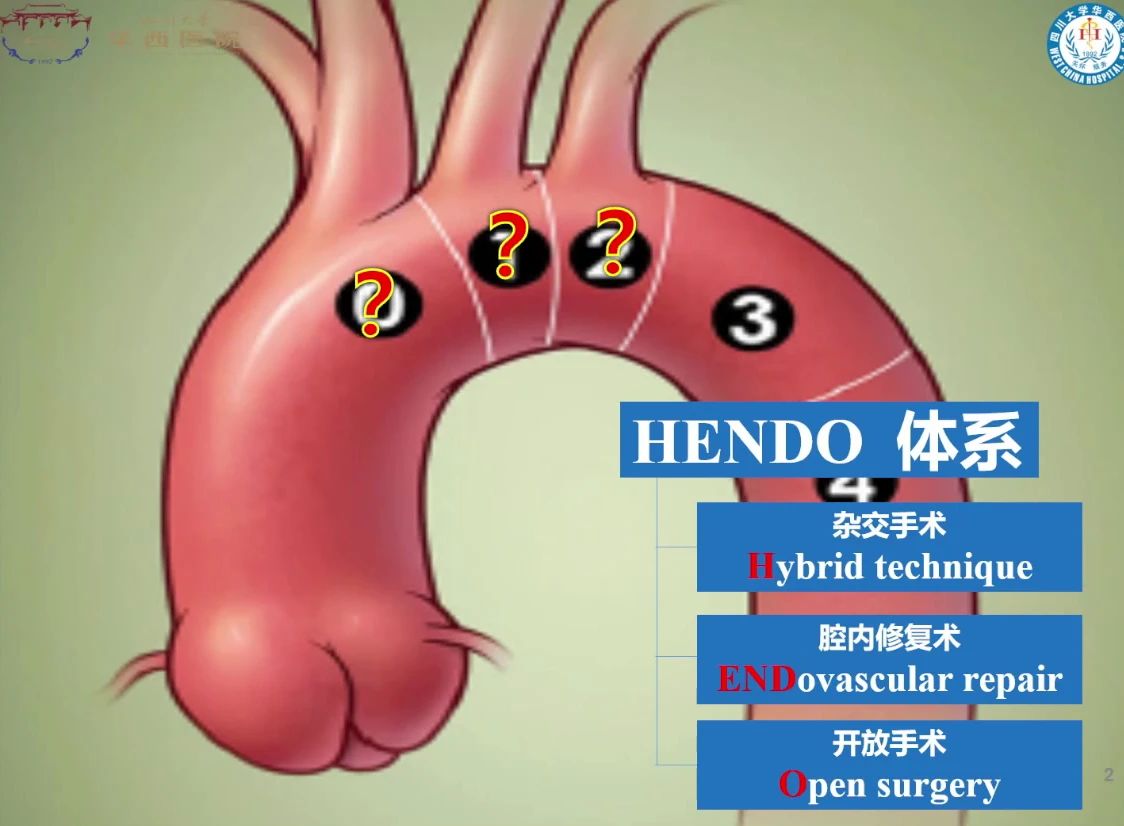
The Fontus intraoperative single-branch stent facilitates intraoperative reconstruction of LSA, allowing an anastomotic anterior shift for ease of maneuvering, while shortening extracorporeal and/or deep hypothermic shutdown times. In addition, the PerMed intraoperative double-branched stent can be used for both LSA and LCCA reconstruction, making it easy for clinicians to choose.
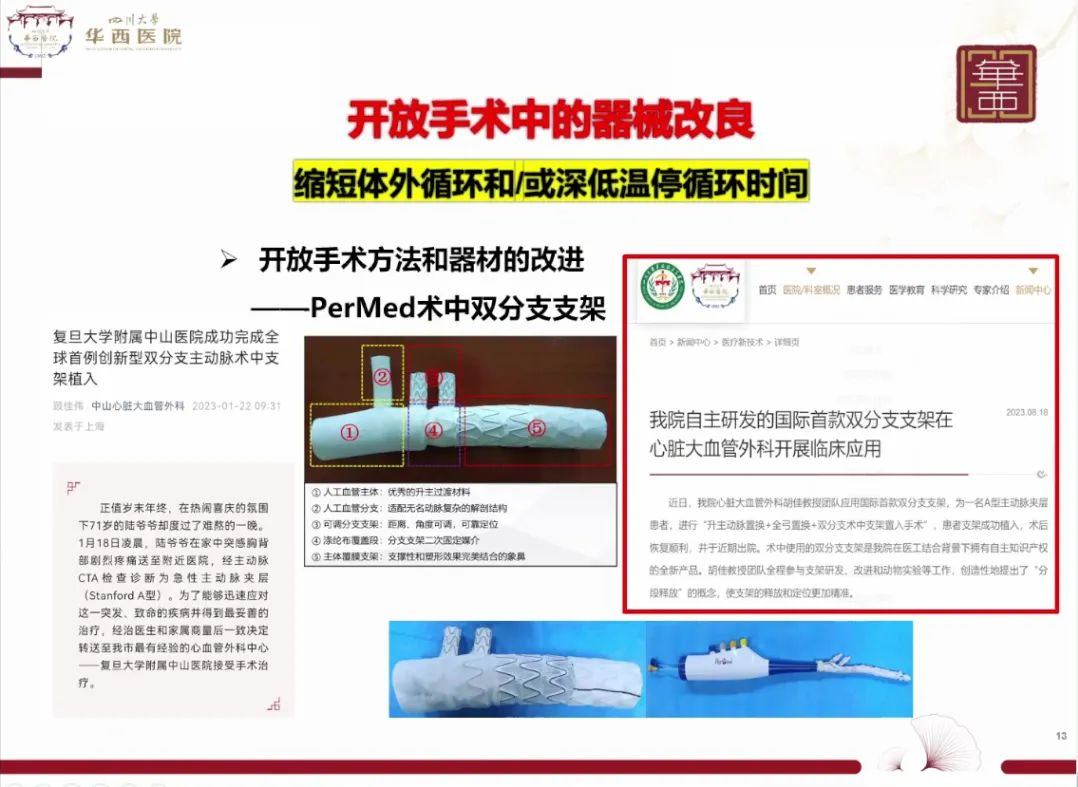
A prospective multicenter randomized controlled study to evaluate the clinical efficacy of intraoperative bifurcated stenting is underway with the participation of West China Hospital, and 214 patients have been enrolled, with a total of 110 patients completing the 6-month postoperative follow-up. Preliminary results showed that in the trial group (n = 57), there were 4 cases of renal insufficiency, 4 cases of death, 1 case of cerebral infarction, 1 case of transient ischemic attack, etc., totaling 16 SAE events; in the control group (n = 53), there were 10 cases of death, 7 cases of infection, 4 cases of renal insufficiency, 3 cases of cerebral infarction, and 2 cases of gastrointestinal bleeding, etc., totaling 30 SAE events.
Case Sharing
Case 1: A 42-year-old man underwent endoluminal repair of the aorta + implantation of left common carotid and left subclavian chimney stent 10 years ago in an outside hospital. CTA of the coarctation aneurysm suggested reverse-tear type A aortic coarctation, with coarctation involvement of the ascending aorta and the innominate artery, and chimney stenting of the left common carotid and left subclavian arteries. The surgical procedure involved clipping part of the overlying stent and the left subclavian chimney stent, implanting an intraoperative single-branch stent, and opening and reinforcing the intraoperative single-branch stent under direct visualization. Postoperative imaging showed patent branches with no endoleak.
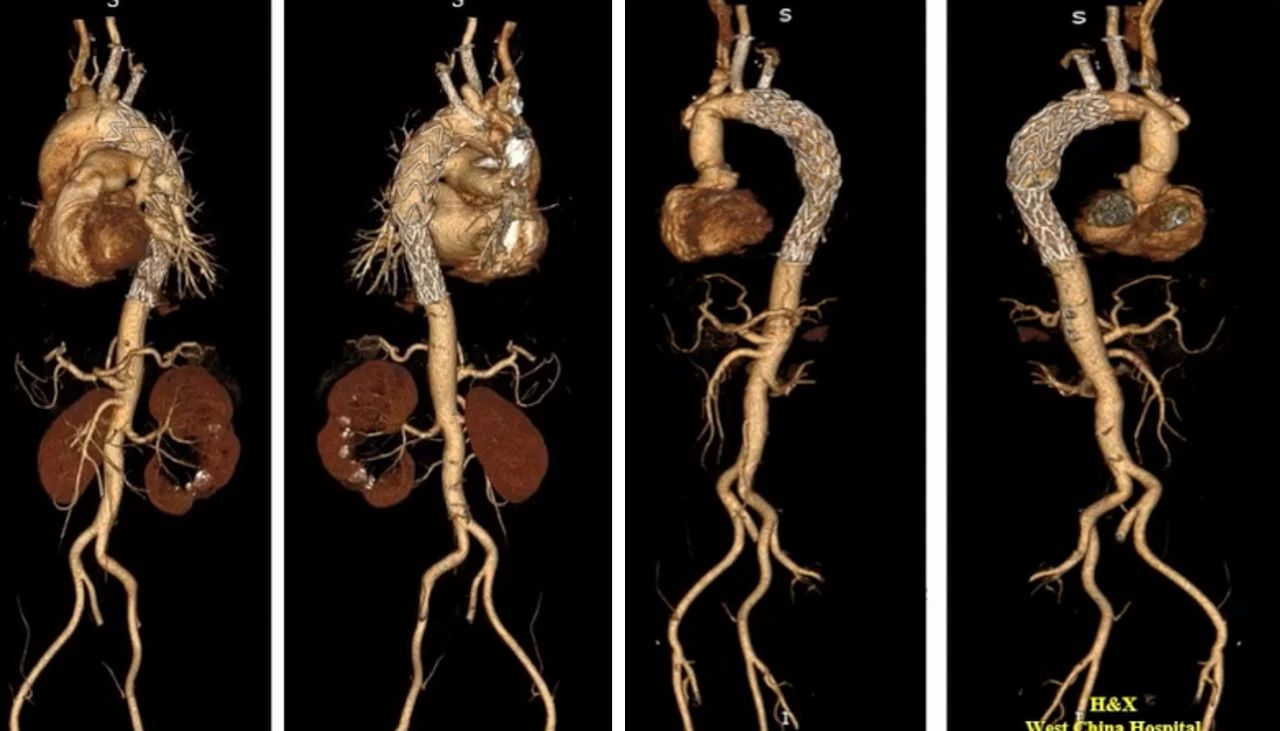
Case 2: A 50-year-old man with a coarctation aneurysm CTA suggesting type A aortic coarctation, the initial rupture was located in the proximal part of the aortic arch, with retrograde tearing to the aortic root, the left common carotid artery and the root of the left subclavian artery involved, and the distal part of coarctation involved to the iliac arteries bilaterally. The LAS and LCCA were reconstructed by placing a double-branch intraoperative stent, and the ascending main artificial vessel was replaced, and a satisfactory outcome was obtained.
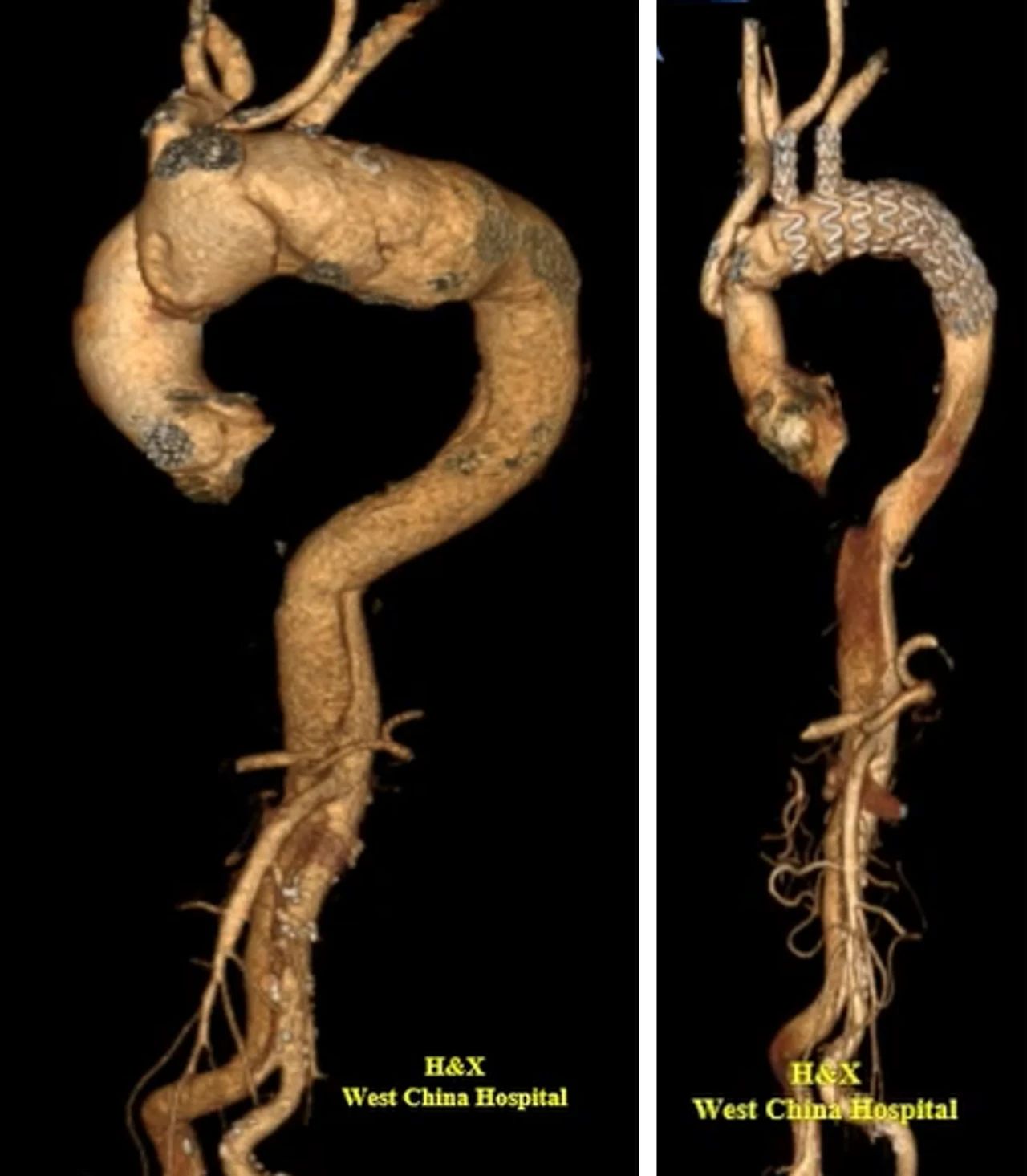
Innovative instruments in hybridization surgery
The Aortic Architecture and Flow Remodeling Device (AERD) technique is a dense mesh stenting of the arch and descending main artery after ascending aorta/half-arch replacement to avoid deep hypothermic arrest. The dense mesh stent modifies and reduces blood flow into the aneurysm lumen, reducing 90% of the eddy currents and 60% of the wall shear stresses that cause thrombus to gradually form within it.
West China Hospital analyzed 46 patients treated with AERDs with a mean follow-up of 533±151 days, with a survival rate of 93.5% (43/46), 100% branch artery patency, and no spinal cord ischemia, acute kidney injury, or stent-related reintervention.
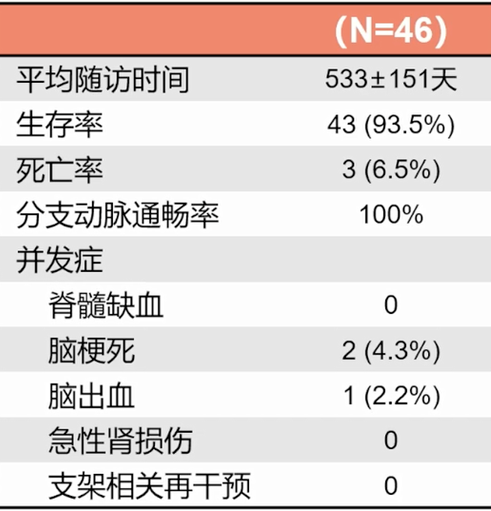
The advantages of total endoluminal repair are the avoidance of extracorporeal circulation and deep hypothermic arrest circulation, less surgical trauma, and less intraoperative bleeding. Currently, the innovation of total endoluminal arch repair devices is in full swing across the country. ZIPPER aortic arch coated stent system is an integrated arch coated stent with one outer branch and two inner branches. The proximal bundle diameter of the integrated arch coated stent is precisely positioned for release, the arch notch is designed to ensure the blood supply to the upper arch branches after release, and the right brachio-femoral artery pathway is established by a preplaced guidewire to assist in the implantation of the head-arm stem stent. The WeFlow Tribranch Modular Triple Branch Stent System developed by Prof. Guo Wei's team is capable of achieving total endoluminal triple branch reconstruction. The Total Endoluminal Reconstruction System for Transcatheter Aortic Type A Syndrome has a bare zone design for the mid arch of the stent and a restrictive metal bare stent design for the distal end of the stent, which is suitable for patients with unconventional arch anatomy, intramural hematomas and ulcers.
The ZIPPER integrated three-branch stent for total endoluminal arch repair FIM study included 8 patients with a 100% immediate success rate, 126.4±43.6 days of follow-up, 1 endoleak, and 1 reintervention.
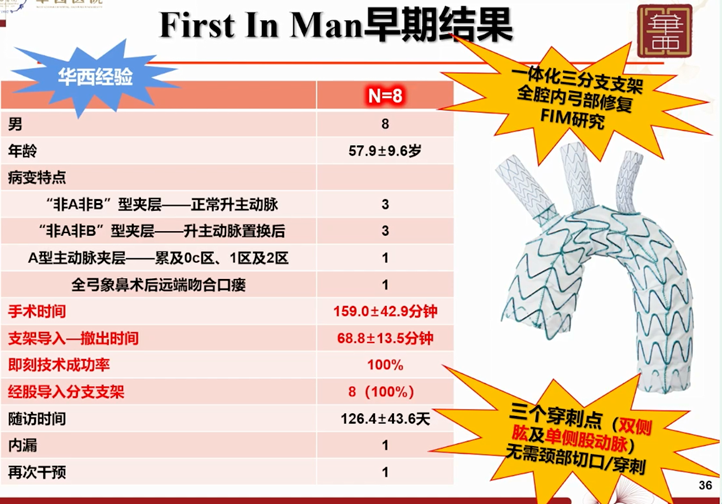
Case Sharing
Case 3: 61 year old male, 1 year after Bentall's procedure, with a CTA of a coarctation aneurysm suggesting residual aortic arch coarctation after type A aortic coarctation, with entrapment involvement of the head and arm trunks and the root of the left common carotid artery, and downward involvement of the thoracic and abdominal aorta to the iliac vascular planes. A ZIPPER aortic arch coated stent was implanted to reconstruct the three branches of the arch and to isolate the entrapment. Postoperative follow-up showed branch patency and disappearance of the false lumen.

Case 4: A 61-year-old man with a coarctation aneurysm CTA suggested aortic coarctation (non-A and non-B type), involving the aortic arch to the abdominal trunk issued above the plane of the abdominal aorta, with a small true lumen and a large false lumen; thickening of the aortic arch and the proximal portion of the left common carotid artery and the left subclavian artery, and the combination of intramural hematomas. WeFlow Tribranch modular three-branch stenting was performed, and satisfactory results were obtained.
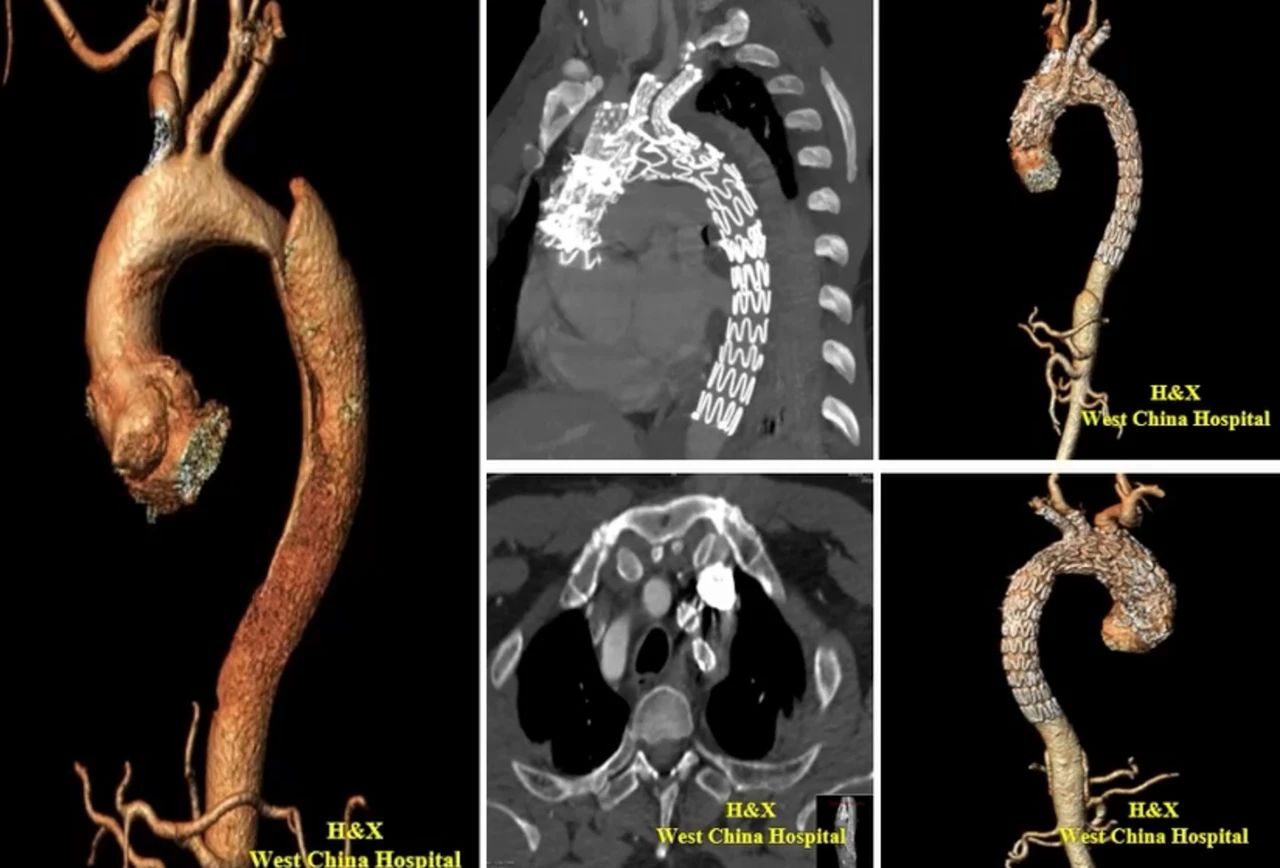
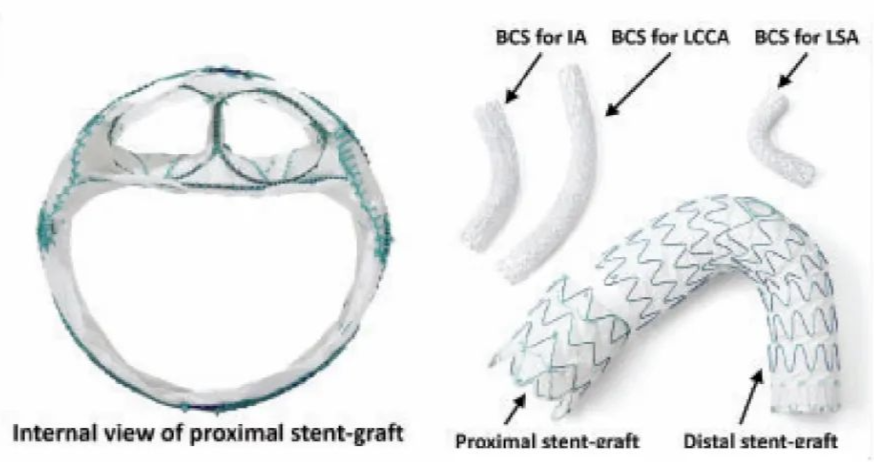
Case 5: A 79-year-old man with a coarctation aneurysm CTA suggested restrictive coarctation of the ascending aorta, intramural hematoma of the aorta combined with penetrating ulcer. Firstly, an invasive cardiac aortic type A descending aortic restrictive stent was implanted, followed by introduction of a proximal body stent, which was precisely positioned and released. The ulcer in the ascending aorta disappeared on postoperative review, and all the branch arteries on the arch were patent, and the intramural hematoma gradually subsided on follow-up.
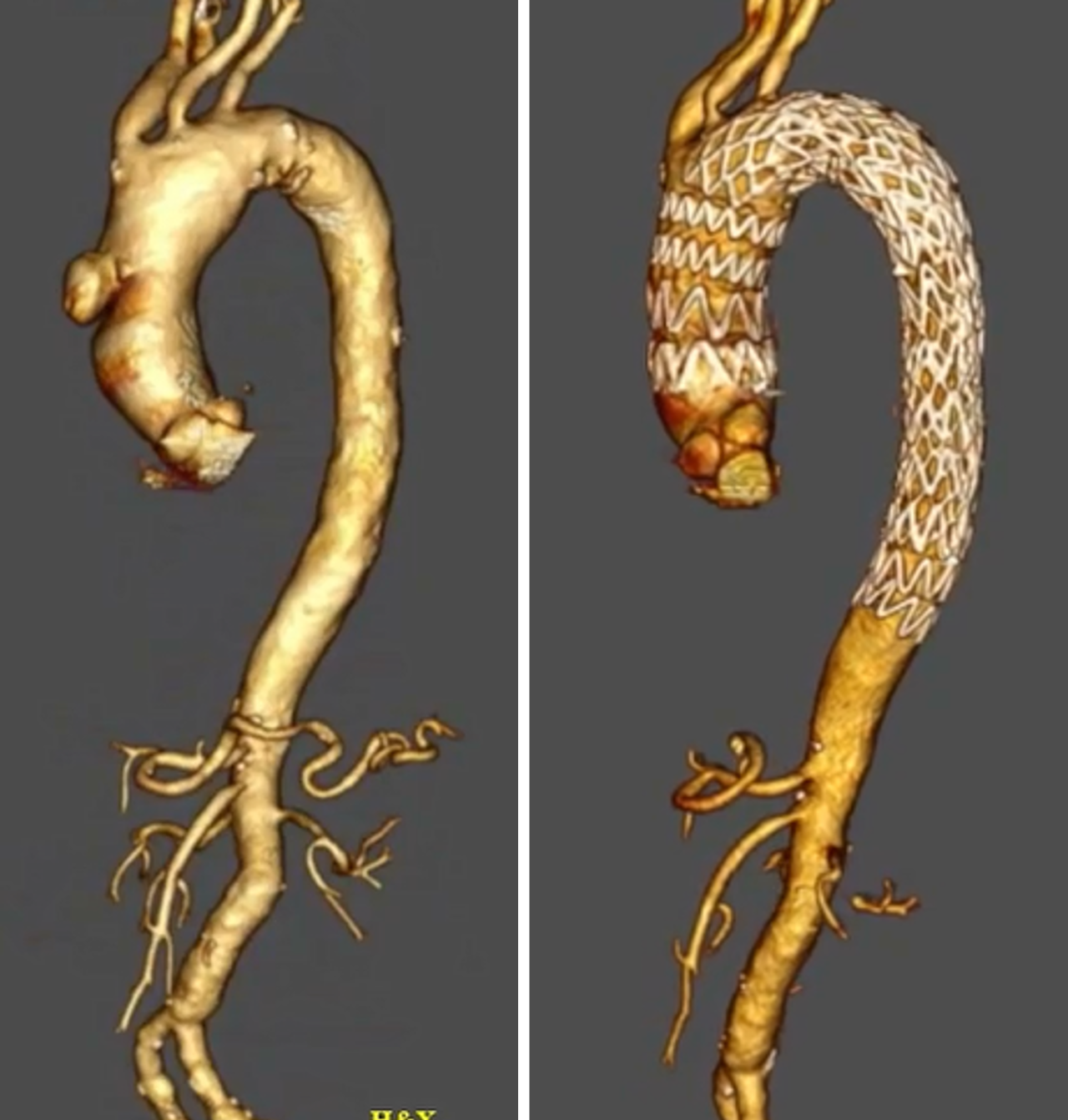
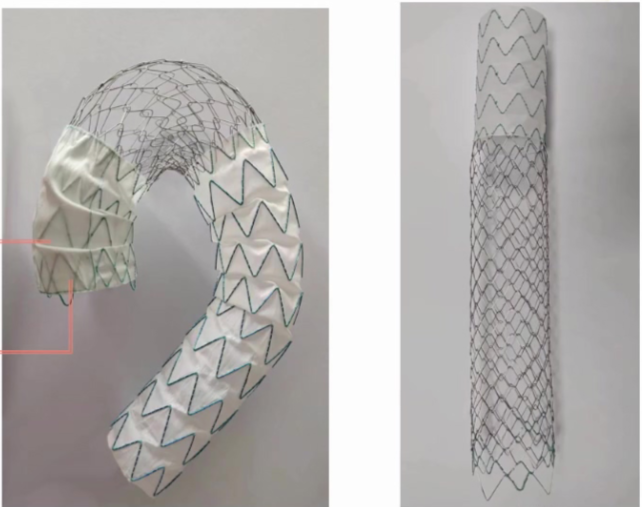
Summarize
The presence of multiple anatomical variants in the aortic arch and the complexity of hemodynamics require individualized choices for surgical treatment, and the choice of operative modality can be based on the HENDO system. Continuous innovations in various aortic devices are expected to simplify the operation and continuously improve the near- and long-term benefits, making the treatment of diseases of the aortic arch easier, less invasive and safer.


